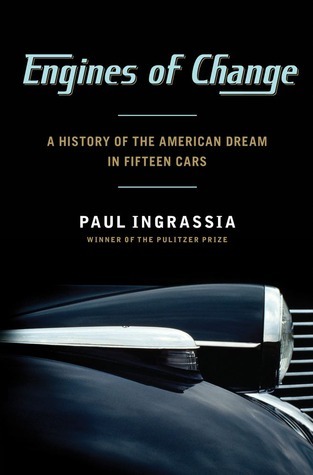What do you think?
Rate this book


416 pages, Hardcover
First published May 1, 2012
But this book isn't intended to be about great cars, fast cars, or famous cars, although it contains some of each. . . . The cars in this book either changed American society or uniquely captured the spirit of their time. By those criteria most cars, even those regarded as automotive icons, fall short" (341).I have traveled the pages of this book two times. This trip won't be my last. Engines of Change: A History of the American Dream in Fifteen Cars is that good. Interesting. Insightful. Enlightening. Humorous. It is all of that and more.
Hefner, Elvis, and the other cultural rebels of the day stood for bigger parties not for social justice or conservation or anything like that. I have a coincidence, self-indulgence offered Detroit a lot more profit potential than self-denial. Cars that were bigger and flasher cost more than cars that were plain and simple. So there was an odd, if often wary, alignment between America’s cultural rebels and its blue-suited corporate establishment. It was a perfect atmosphere for automotive extravagance (66-67).One may not think of automobiles as a reflection of culture, but I think Ingrassia's assessment is spot on. What are the implications for today?